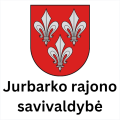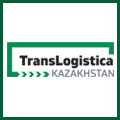THE head of Taiwan's EVA Air is confident that the company's performance has picked up in the first quarter of 2012 after volumes handled by its air freight business were boosted by shipments of the new iPad tablet and its passenger business experienced growing demand.
"We are very upbeat about our general performance, which was better than in Q4 last year," said EVA Airways president Chang Kuo-wei, reported Taiwan's China News Agency.
Speaking on the sidelines of a ceremony to bring the carrier into the Star Alliance, Mr Chang was cited as saying that air freight volume has been recovering after suffering a decline last year on the back of weaker demand for electronic devices.
Mr Chang expects EVA's affiliation with the 26-member alliance will lead to greater business after it comes into effect in 2013.
"The synergy effect is likely to be reflected in both our accessibility and expansion of customer base," he said. He expects passenger traffic will rise by one-fifth after EVA joins the alliance, the report said.
According to Mr Chang, EVA's involvement in the Star Alliance will enable the airline to expand its global network coverage to 1,345 destinations in 191 countries.
On the other hand, the key factor in whether the carrier will turn a profit this year will be the rise in fuel prices, as fuel expenses account for 40 per cent of the carrier's operating costs.
Source Shipping Gazette - Daily Shipping News
SOUTHERN Air will double its Boeing 777Fs fleet to four with the third aircraft delivered and the fourth on April 25 to be deployed by DHL Express for new round-the-world service from Hong Kong to Los Angeles and Leipzig.
Southern Air is the first and only ACMI operator to fly the 777F and represent a critical step in its long-term fleet enhancement programme, said its CEO Daniel McHugh. "These aircraft, which are more efficient and environmentally advanced than any other wide body freighter, solidify our position among the world's leading cargo carriers," he said.
DHL Express Americas CEO Stephen Fenwick said the second 777 start-up on the round-the-world service will reduce transit times for DHL customers in much of Asia to the US west coast, and will enable DHL to offer the latest possible pick-up times in key west coast cities for many customers shipping to European destinations.
Its fuel efficiency, range and payload operating at 17-28 per cent fuel-per-ton advantage compared to other freighters reduces costs for its customers and allows them to set up new routes easily, added DHL in a statement.
The third and fourth 777Fs in the Southern Air fleet are painted, like the first two, in combined DHL and Southern Air livery.
Source Shipping Gazette - Daily Shipping News
2012-04-06
Today, April 6, A Vitis of the passenger vessels MELODY (204,7 m, flag of Panama) is scheduled for the port of Odessa. The ship will arrive from Yalta. The ship company MSC Cruises - a frequent guest of South Palmyra. Thus, on 26 March this year the MSS MELODY opened cruise navigation at the port of Odessa, and last year this ship opened and closed the season. MSC MELODY baton in the fall of 2012 is taken up by other ships of MSC Cruises, with another musical names: 250-meter beauty MSC ORERA (known from Odessa for a frequent visitor during 2010-2011.) And MSC LIRICA (first visit to Odessa was in 2006). By the way, the godmother of at least eight ships of the mentioned cruise company MSC Cruises, a member of the Italian holding company Mediterranean Shipping Company is the film star Sophia Loren.
Press-Service OCSP.
The Seafood Rømø East Jutland and Isefjord blue shell mussel dredge fishery in Denmark was today awarded MSC certification following an independent assessment against the MSC [1] standard for sustainable fisheries. The certificate means that – subject to traceability certification – mussels from this fishery will be eligible to bear the coveted blue MSC ecolabel, which provides consumers with assurance that the product is traceable to a certified sustainable source.
Seafood Rømø operates two vessels, one in the Isefjord and one off the eastern coast of Jutland all year around but most intensively during the period mid-August to February. The fishery uses dredges to harvest approximately 1500 metric tonnes of blue shell mussels (Mytilus edulis) every year.
To protect potentially sensitive marine habitats in the shallow water, the vessels are limited by legislation and cannot fish in waters shallower than 4m depth. There are further restrictions in place to protect wildlife in Natura 2000 sites. These include depth restrictions on fishing in water shallower than 4m or deeper than 12m.
Denmark is one of the most important producers of processed mussels in Europe and more than 90 per cent of all landings are exported as single frozen mussels or canned commodities. The mussels from this fishery are sold to both the live market and processed. Most of the mussels are exported but a small quantity is sold to the live market in Denmark.
Commitment to further improvements
The assessment of this fishery took less than a year and it scored highly for its stock status, with the certifier noting that the fishery had a negligible impact on mussel stocks and the marine environment. Nevertheless, as a condition for on-going certification, Seafood Rømø will develop a monitoring programme and a detailed research plan for the fishery together with the National Institute of Aquatic Resources (DTU-Aqua), which has overall responsibility for monitoring and assessing the different mussel stocks in this area.
Jan Rasmussen from Seafood Rømø says: “With our MSC certification we now can continue our sustainable fishing in the same way as we have done so far, namely with respect for the same nature that we all are part of, and our customers can with good conscience continue to eat our delicious mussels.”
“On behalf of the MSC, I’d like to congratulate Seafood Rømø on the certification of their blue shell mussel fishery. It’s very positive to see this fishery come through with such good scores and yet still commit to improvements that will help it maintain its claims to sustainability into the future, for the sake of the environment and environmentally-conscious consumers,” says Helene Tivemark, fisheries outreach officer for the MSC in the Baltic Sea region.
Source MSC
HONG KONG's Orient Overseas Container Lines (OOCL) has announced it will increase freight rates for westbound Asia-Europe trade US$450 per TEU from May 1, covering shipment from the Far East (excluding Japan), India subcontinent and Middle East to North Europe, the Mediterranean and the Black Sea.
"The ocean freight rate for the Asia Europe Trade continues to be below the required level to cover basic operating costs," the company explained.
Source Shipping Gazette - Daily Shipping News
SINGAPORE-based APL Logistics will raise rates by US$450 per TEU on westbound trades from Asia to Europe starting May 1.
This is the third general rate increase imposed this year on the depressed trade lane. The carrier imposed increases of US$750 per TEU from March and US$400 per TEU from April.
"The rate restoration is applicable to all shipments from Asia to North Europe, the Mediterranean and the Black Sea," APL India said.
Source Shipping Gazette - Daily Shipping News
HONG KONG's Orient Overseas Container Line (OOCL), the 13th biggest carrier in the world, has signed a 40-year container terminal lease with the Port of Long Beach, according to a company statement.
The agreement, also known as the Middle Harbour Redevelopment Project (MHRP), was signed by OOCL chief executive Philip Chow and Port of Long Beach executive director Chris Lytle before representatives of the two parties and the International Longshore and Warehouse Union (ILWU).
The lease will help OOCL develop a more advanced terminal with the latest automation technologies that will "triple the handling capacity of its current terminal at Long Beach and cutting environmental emissions by half."
Said Mr Chow: "This land-lease agreement has been many years in the making and without the support of the citizens of Long Beach, the government, the ILWU, harbour commission, and all those who believe in the many benefits that this project will bring to the city and region, this day could have been possible."
Said Mr Lytle: "OOCL has been a valued Port of Long Beach business partner for many decades. The historic agreement we sign today strengthens and continues that partnership for many decades to come. The Middle Harbour property is key to the future competitiveness of the Port of Long Beach. And we could not have a better partner than OOCL."
Source Shipping Gazette - Daily Shipping News
ITALIAN antitrust authorities have fined 15 container shipping line's in-house shipping agents and two trading firms US$5.3 million for price fixing at Genoa from February 2004 to December 2009.
The shipping agents were accused of undertaking secret activities that fix prices for shipping services, including issuing bills of lading for exports and delivery orders for imports, according to the Italian authority AGCM, which held that the pricing-fixing exerted "a significant impact on the market".
Maersk Italia was not fined for joining the cartel because it informed on the rest as did Hapag-Lloyd Italy to a lesser extent, which got its fine halved to $322,000.
Marseilles' CMA CGM was fined with the largest penalty of $1.18 million followed by China's Cosco at $965,000 and Japan's "K" Line at $575,000.
Other participants, which were each fined $108,000, included Singapore's APL, Taiwan's Yang Ming, Israel's Zim, and the two trade associations, Assagenti and Spediporto.
The exposure of the cartel can be used as a reference to look into the transactions in other Italian ports, including La Spezia and the container transshipment hub Gioia Tauro, said the authorities.
Source Shipping Gazette - Daily Shipping News
GERMANY's Commerzbank are expected to suffer shipping loan losses of as much as EUR441 million (US$588 million) this year, reports Bloomberg.
Many German smaller and mid-sized shipping companies, which has the world's third largest shipping fleet, can no longer pay debts with some facing bankruptcy, says the German Shipowners' Association (VDR) shipping association.
"A lot of the charter owners can't pay principal to the banks because of low charter rates. Smaller tonnage is hit especially hard. Markets are really poor and we still have a certain backlog of ships," said the Hamburg-based VDR's managing director Max Johns.
Commerzbank's 2008 takeover of Dresdner Bank AG increased its stake in shipping lender Deutsche Schiffsbank to 92 per cent, doubling the size of its maritime loan portfolio, just before the industry went into a worldwide slump.
Commerzbank has the world's third-largest shipping portfolio at $28 billion, according to Athens-based vessel finance consultant Petrofin SA.
Today, Germany's second-largest bank, behind Deutsche Bank, is already working to fix its balance sheet and raise EUR5.3 billion by the end of June.
Shipping loan losses will likely rise to 2.1 per cent of such lending at Commerzbank this year, Morgan Stanley analysts Henrik Schmidt and Doug Hayes wrote in a note. That's more than the 1.8 per cent projection for the Royal Bank of Scotland and the 1.5 per cent forecast for Norway's DNB, Italy's UniCredit SpA (UCG) and France's BNP Paribas.
"Shipping is one of the reasons behind Commerzbank's underperformance in the past 12 months," Kepler Capital Markets analyst Dirk Becker told Bloomberg from Frankfurt. "It is a risky business, as risky as many parts of commercial real estate. There'll be a time of reckoning at some point."
Maersk Line, CMA CGM and Hapag-Lloyd recorded losses in 2011 because of high fuel costs and falling freight rates, attributed to an oversupply of tonnage.
Source Shipping Gazette - Daily Shipping News
THE biggest vessel ever to dock at Sharjah's Gulftainer's Khorfakkan Container Terminal (KCT), the 14, 074-TEU CSCL Uranus, has arrived on its maiden voyage from the Far East, reported WAM, Emirates New Agency.
Fresh out of a Korean shipyard on the March 9, it is the largest ship to arrive at Khorfakkan Container Terminal and is the China Shipping Container Lines' (CSCL) largest ship.
"For KCT, this marks another success in our ever-expanding client range," said Gulftainer managing director Peter Richards. "The selection of CSCL Uranus to dock in KCT on its maiden call further proves KCT's abilities as one of the world's fastest-moving ports."
Gulftainer's KCT was named Shipping Port of the Year in 2011 at the Annual Supply Chain and Transport Awards (SCATA 2011) in Dubai and is recognised as one of the most efficient ports in the world, said the report.
KCT has 1,900 metres of quay, a 16-metres alongside, 20 ship-to-shore gantry cranes, and is able to dock the biggest containerships.
It is located on Sharjah's Indian Ocean coast, conveniently outside the tense Strait of Hormuz and near main east-west shipping routes with its easy access to the UAE's Dubai, Sharjah and Abu Dhabi.
The port was recently expanded, increasing the total number of gantry cranes to 20 and the overall storage space to 450,000 square metres, said the report.
Gulftainer Company Limited has been operating since 1976 in the UAE and operates three main ports in the Emirates: Sharjah Container Terminal (SCT) and Khorfakkan Container Terminal (KCT) on behalf of the Sharjah Port Authority, and terminal operations on behalf international plastics solutions company, Borouge, in Ruwais, Abu Dhabi.
Source Shipping Gazette - Daily Shipping News
CHENGLINGJI, a port in Hunan province's Yueyang city has started a new shipping service via Yangtze River and along the coast to Hong Kong and Macau, which is the first such service to the two special administrative regions, Xinhua reports.
According to Changsha Daily, in Hunan province, the inauguration ceremony was held at the Chenglingji International Container Terminal, the maiden ship carried 28 TEU of fireworks to Hong Kong.
The service is operated by Fujian Lianfa Shipping Company, the subsidiary of the largest carrier in Fujian in terms of capacity, Fujian Guanhai Shipping Company. It uses two ships and offers six round-trip sailings per month that sails along the Yangtze River to Shanghai then sails along the coast to Hong Kong and Macau. Each single journey lasts six to seven days. Using the new service, shippers can save up to CNY300 (US$47.64) per TEU.
Customs at Shanghai, Wuhan, Chongqing and Changsha have started to cooperate on trans-regional clearance for the new service. Cargo from Yichang, Chuanjiang and Chongqing that are previously transshipped at Wuhan's Yangluo port will now be transshipped via Chenglingji port, bringing 50,000 to 120,000 TEU to the port's throughput.
Experts said that the new line will bring opportunities for the development of Hunan's export-oriented economy and international logistics.
Being the largest port in Hunan province, Chenglingji port is located on the south bank in the middle reaches of the Yangtze.
Source Shipping Gazette - Daily Shipping News
THE United States may soon allow China to import American technology with military applications, said US Ambassador to China Gary Locke in a recent speech in Shanghai, according to the Wall Street Journal.
Beijing has long complained that US limits on exports of such high-tech equipment such as aircraft engines, underwater cameras and propulsion systems and telecom gear are tantamount to protectionism.
Mr Locke said US officials will go to Shanghai in May with a group of American tech companies to discuss what equipment China would be allowed to purchase.
"We are in the midst of a major reform and simplification that will enable more high-tech goods to be exported to China," said Mr Locke, adding that liberalisation would boost US exports and reduce America's trade deficit.
The Wall Street Journal said such moves risk a backlash from some Republican politicians in an election year. Rightist Republicans have been attacking the leftist Obama administration over its engagement with China on intellectual property, currency and market-access concerns.
"China is an increasingly hostile and disruptive force in the world. The idea that we are cooperating with them, in any capacity, is alarming," California Republican Congressman Dana Rohrabacher told a congressional committee.
But American Chamber of Commerce in China wants restrictions eased, fearing lost sales to European producers whose products are more accessible and where China is likely to fund research.
Xinhua reports the Ministry of Commerce welcomes all measures conducive to expanding high-technology trade, "But till now, China has not seen any substantial moves from the United States to relax control over its exports to China." said a ministry spokesman.
Controlled items include aircraft and aircraft engines, avionics and inertial-navigation systems, lasers, depleted uranium, underwater cameras and propulsion systems, certain composite materials, and some telecommunications equipment for space communications or air defence, according to the China section of the US Commerce Department's Bureau of Industry and Security.
Mr Locke spoke of 141 items he said China wanted from the US. China reportedly provided the US with the list in preparation for Chinese President Hu Jintao's visit to the White House in January 2011.
Source Shipping Gazette - Daily Shipping News
ISRAEL's Zim Integrated Shipping Services recently received US$50 million from its major shareholder Israel Corporation as its second part of a $100 million aid package.
Funding will allow Zim to operate with adequate cash flow and comply with its financial covenants. The carrier has already received a total of $450 million fund injected by Israel Corp to avoid bankruptcy in 2009.
As the world's 16th largest carrier, Zim has not been doing well in recent years. According to maritime analyst Alphaliner's figures, it posted an operating loss of $276 million in 2011 and even much greater loss of $675 million in 2009.
Source Shipping Gazette - Daily Shipping News
MUMBAI Nehru Port's container volume increased 1.5 per cent to a record 4.32 million TEU in the fiscal 2012, the port authority said.
Gateway Terminals, Nehru's largest container facility operated by APM Terminals, moved 1.89 million TEU, up from 1.85 million TEU a year earlier. Traffic through DP World's Nhava Sheva International Container Terminal totalled 1.4 million TEU, down from 1.54 million TEU. Volume via the state-owned Jawaharlal Nehru Container Terminal increased to 1.03 million TEU from 880,000 TEU.
Traffic through port in fiscal 2011-12 hit 4.32 million TEU. The volume of containers through India's Port of Jawaharlal Nehru (Nhava Sheva) hit an "all-time high" of 4.32 million TEU in fiscal 2011-12 ending March 31.
Officials said total cargo tonnage for 2011-12 was estimated at 65.75 million tons, with containerised tonnage amounting to 58.25 million tons.
"We are taking steps to develop additional capacity to cope with the projected growth in traffic volume," said port chairman L Radhakrishnan.
Source Shipping Gazette - Daily Shipping News
LOGISTICS provider Agility has posted an eight per cent increase in net profit to KWD27 million (US$91.1 million) in 2011 despite a five per cent revenue decline to KWD1.3 billion due to a discontinued US defence logistics role.
Fourth quarter profit was up 114 per cent to KWD3.5 million from a net loss of KWD23.7 million in the same quarter 2010, drawn on revenues of KWD345 million, up four per cent year on year.
"We are a different company today than we were a year ago, and we consider 2011 a new financial baseline against which we will measure future performance," said Tarek Sultan, Agility's chairman and managing director.
"We sold the bulk of our vehicle fleet in the Middle East, freed up warehousing space for commercial customers, and converted working capital to cash. Having undergone some heavy lifting in terms of restructuring over the last two years, the company anticipates solid gains in 2012 and beyond," Mr Sultan added.
Agility performance in high-growth emerging markets was a major contributor to revenue, as reflected in the double-digit growth in the Asia Pacific region.
Its infrastructure companies contributed KWD111.3 million with revenue growing 18 per cent year on year supported by profitable niches in the market place, he said helped by the closing of two deals.
Said Mr Sultan: "We merged Agility Qatar operations with Gulf Warehousing Company (GWC) and realised gain of KWD8 million. We also formed a joint venture with France Telecom and converted our debt into equity in Korek. Today we have an indirect stake of 24 per cent in Korek and US$100 million debt yielding 12 per cent per annum".
Other growth areas included its National Aviation Services (NAS) with an aim to further enhance the potential of these airport ground handling services which have succeeded in developing countries.
Source Shipping Gazette - Daily Shipping News
The magazine SEA has been published since 1935
International business magazine JŪRA MOPE SEA has been published since 1999
The first magazine in Eurasia in the four languages: English, Chinese, Russian and Lithuanian
|
|




.jpg)






